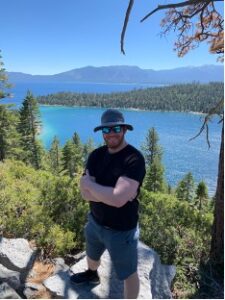Steven Merrill
Education:
B.S. Biochemistry, California State San Bernardino 2016, Magna Cum Laude
From: Chino, California
Joined David Lab: January 2019
Outside of lab: Exploring the Davis area with my wife, exercising, or catching up on the latest Marvel project (:
Research in the David Lab:
Oxidative DNA damage requires repairment to maintain genomic integrity. The Base excision repair pathway is initiated to remove undesirable nucleobases and inserts proper nucleobase. The pathway is initiated by a class of enzymes known as DNA glycosylases- initiation occurs following the identification and excision of an aberrant nucleobase. In case of the DNA glycosylase MutY, MUTYH in humans, the base to be removed is adenine following it’s misplacement across an oxidized guanine during replication. My work in the David lab is aimed to further explore and develop a model for early nucleobase identification and verification- processes that occur prior to but demonstrate to be influential in set up for proper catalysis. Specific residues investigated as part of this work are in conserved motifs of various MutY orthologues and curiously a subset of these residues have variants in which there is a suspicion of elevated cancer susceptibility. My work has a combined structural, biochemical and cellular components to propose a comprehensive understanding of particular regions of interest within MutY.
